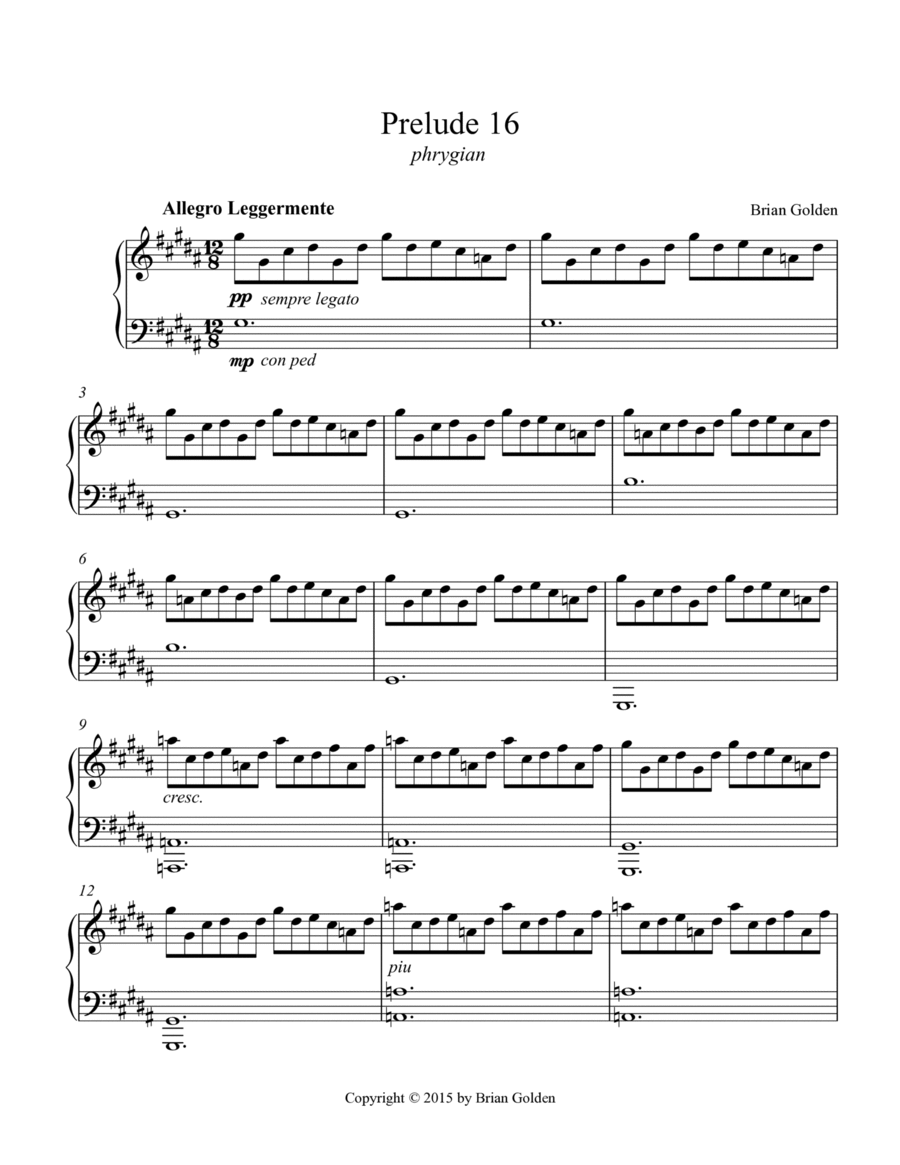Piano Solo - Level 4 - Digital Download SKU: A0.1248575 By Brian Golden. By Brian Golden. Arranged by Brian Golden. Classical,Contemporary. Score. 8 pages. Brian Golden #843067. Published by Brian Golden (A0.1248575). Prelude 16 in G# Minor Phrygian from 24 Preludes for the Piano in Major and Minor Modes by composer Brian Golden  The creative concept in writing these preludes is to provide a link to past preludes written for the keyboard, and in particular to the works of J.S. Bach and Frederic Chopin, whose works stand as essential repertoire for any student of the piano.  Using Bach’s and Chopin’s examples, my goal was to compose in all twenty-four keys, yet offer my own variation on the progression of key signatures – Bach’s being a pattern of major to parallel minor progressing chromatically through all keys, and Chopin’s a pattern of major to relative minor keys progressing clockwise through the circle of fifths.  In order to expand my harmonic and melodic possibilities, I have included the modal keys rather than only the major and harmonic minor keys, and have chosen to work counterclockwise through the circle of fifths, which is a more natural harmonic progression.  Therefore, all major preludes resolve from one to another V-I, as well as do all the minor preludes.  While there are seven modal scales, I decided to leave out the locrian modes for the following reasons.  First, due to the diminished fifth, the locrian mode cannot be thought of as either major nor minor.  Second, the locrian mode did not have a relative key to pair with, since there were no other keys with the identical characteristic notes.  In creating the key architecture, I determined that there was only one solution to pairing major and relative minor scales based on a shared parent key and characteristic note - ionian/aolian, mixolydian/phrygian and lydian/dorian.  This specific order of modal scales is the only order that would enable composing in all twelve key signatures.  Finally, the inspiration for each prelude came from playing through several other preludes in the same keys - mostly by Bach and Chopin - and letting their themes and styles influence me in the writing of my own.
